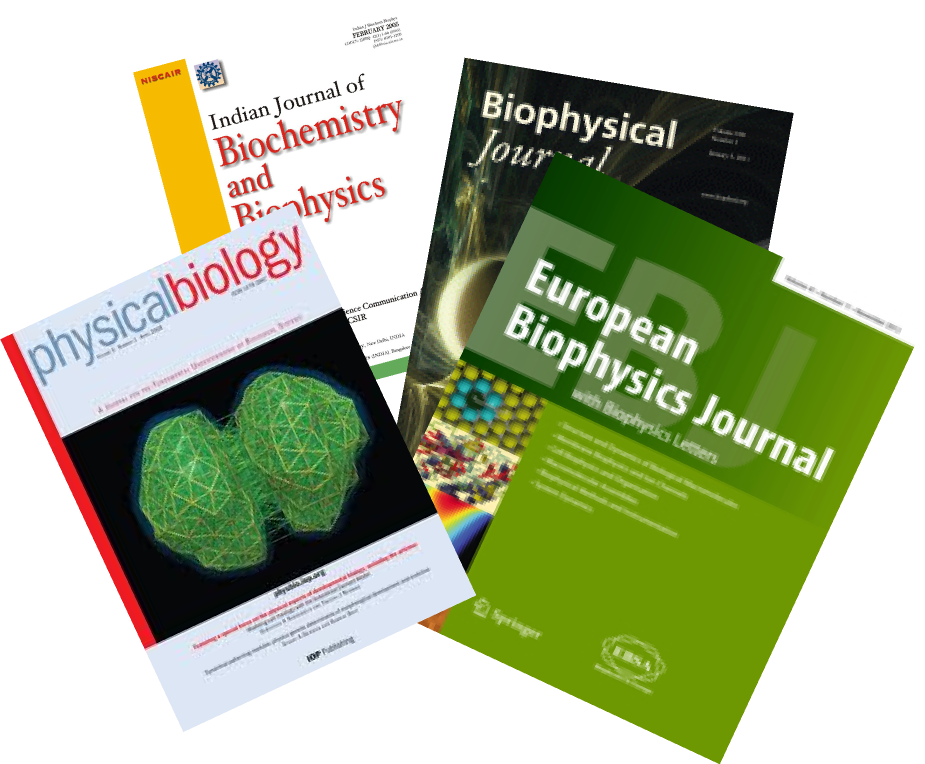Research paper reading assignments
- Reynolds Number28-29 Jan 2016: Purcell 1977 Life at Low Reynolds
Numbers. The famous reprint of a paper that appeared in a book
"The Physics of our World"based on a talk given by E.M. Purcell at
a Symposium in honour of Victor Weisskopf.
- Diffusion and measuring it: Conrad W. Mullineaux, Anja
Nenninger, Nicola Ray, and Colin Robinson (2006) Diffusion of Green
Fluorescent Protein in Three Cell Environments in Escherichia Coli.
J. Bact. Vol. 188, No. 10, p. 3442- 3448 [PDF]
- Crowding: [31 Mar 2016] McGuffee & Elcock (2010) Diffusion, crowding
and protein stability in a dynamic molecular model of the bacterial
cytoskeleton. PLoS Comp. Biol. Vol. 6, e1000694[PDF]
- Brownian Ratchets Astumian D. (1997). Thermodynamics and
Kinetics of a Brownian Motor. Science 276.[PDF] [Paper reading: 21
Mar 2012]
- Protein folding Minton, A. P. (2000). Effect of a
concentrated 'inert' macromolecular cosolute on the stability of a
globular protein with respect to denaturation by heat and by
chaotropes: a statistical-thermodynamic model. Biophys. J. 78,
101-109.[PDF]
- Molecular motors: Bormuth et al. (2009). Protein
friction limits diffusive and directed movement of kinesin motors
on microtubules. Science 325, 870.[PDF] and supplementary material
- Tissue mechanics: G Forgacs, R A Foty, Y
Shafrir, and M S Steinberg (1998)Viscoelastic properties of
living embryonic tissues: a quantitative study. Biophys J. 1998
May; 74(5): 2227-2234.
- Stem cells: Engler et al 2004 The role of stiffness in stem
cell differentiation.
Assignments
Additional reading
Laboratory protocols
- Measuring diffusion (Perrin's experiment) [LAB01-PROTOCOL]
- Date/Time of lab:18, 19 February 2016 @0830h
- Submission date/time: 03 March 2016 @0900h (in class)
- Python code for [1D Gaussian fitting]
- Crowding and enzyme kinetics- A note about the lab, protocol and
data [TBA]
- Date of lab:
- Submission date:
|
